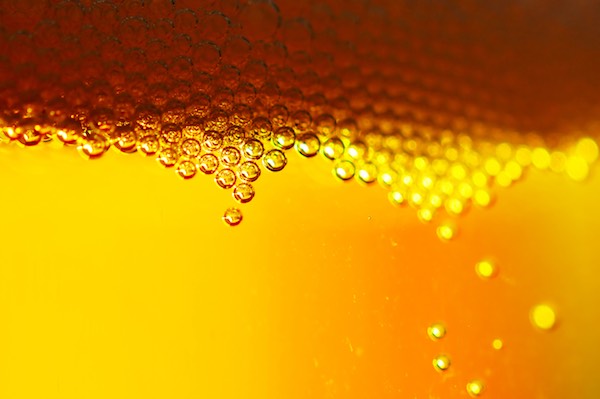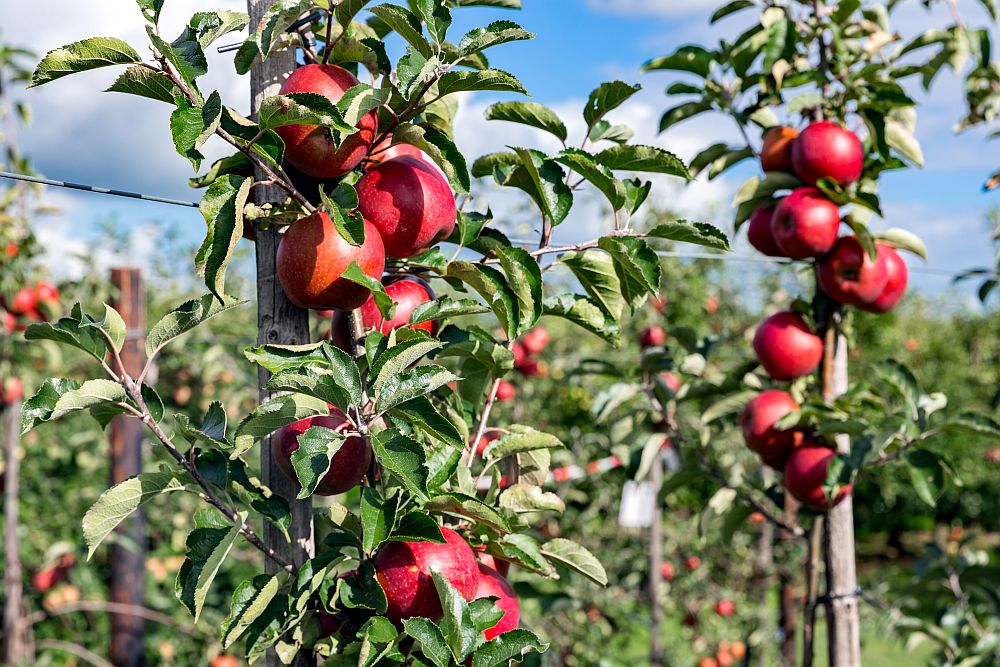
[Image above] Credit: Tambako The Jaguar; Flickr CC BY-ND 2.0
Next Tuesday, July 4, marks the 241st anniversary of America’s adoption of the Declaration of Independence. And to celebrate the birth of America, I plan to raise a toast this holiday weekend—a hearty cheers to independence with a cold craft beer.
There’s plenty of science behind the process of brewing beer—sure we could talk about how microbes munch up sugars and dutifully convert them to ethyl alcohol. But those same microbes also produce another product during the fermentation process that most of us completely ignore: carbon dioxide.
And it’s not an insignificant amount of carbon dioxide that’s created during beer fermentation. Some citizen scientists have calculated that even brewing a 5 gallon batch of home brew produces several pounds of carbon dioxide.
And, on the other end of the spectrum, large-scale breweries like Coors produce ~300 million pounds of carbon dioxide every year from beer fermentation alone.
The volumes especially become relevant when you consider the sheer amount of beer that is brewed here in America and around the world. A USA Today article from 2015 shows the exponential growth of craft beer alone in the U.S. over the past several years, during which production has more than doubled. As of last year, craft beer represented a considerable 12% of the entire U.S. beer market.
And it’s not just an American phenomenon—the craft beer market is booming in Europe as well.
While this volume of craft beer production is great for flavor, variety, and small business, the effects that human activities have on the planet are always a concern.
Beer brewers are increasingly doing their part to make their operations more environmentally friendly, including improving breweries’ building envelopes, adapting to changing weather, and reusing and recycling resources. So it’s no surprise that the significant generation of carbon dioxide is a prominent target as well.
Although beer fermentation produces carbon dioxide as a waste product, brewers also need carbon dioxide at later stages of the beer production process, when beer is carbonated and packaged (carbon dioxide is used to purge bottles before filling).
Larger volume breweries like Sierra Nevada can afford to install nifty carbon dioxide recovery systems that allow them to reuse the generated carbon dioxide and prevent its release into the atmosphere, but these systems and solutions are not economical for smaller operations like microbreweries.
That soon may change if a simple and economical carbon capture technology developed at Lawrence Livermore National Lab (Livermore, Calif.) continues its commercial development trajectory.
LLNL scientists have developed a carbon capture system that uses simple, nontoxic carbon dioxide-grabbing polymer microcapsules to absorb and store the greenhouse gas.
The micro-encapsulated CO2 sorbent (MECS) system consists of gas-permeable polymer microcapsules containing a simple compound—sodium bicarbonate, a.k.a. baking soda—that soaks up carbon dioxide.
The microcapsules are suspended in a mesh structure, allowing gas to interact with the microcapsules’ large surface area. Altogether, the scientists say their MECS system captures carbon dioxide up to ten times quicker than existing recovery systems.
In fact, I reported on this exact same technology on Ceramic Tech Today over two years ago. At that time, scientists were focused on using MECS to clean up industrial plants, which was the application originally driving development of the technology.
Through exploration of new potential markets in the Energy I-Corps program—a program that trains scientists and engineers in commercialization techniques and marketplace exploration for lab-developed technologies—the LLNL MECS team identified significant potential for the microcapsule technology in the beer brewing industry as well.

LLNL researcher Congwang Ye (right) visits with professors at UC Davis to see their pilot-scale winery and brewery and learn about fermentation tank operations. Credit: LLNL
But back to the technology itself.
The microcapsules are generated via a simple lab setup that uses a microfluidic fabrication system to manufacture the microcapsules, drop by drop, from a capillary tip. Subsequent curing with UV light is all that’s needed to complete the manufacturing process.
Beyond MECS, the microfluidic fabrication system can be adapted for other materials as well, including ceramic capsules manufactured from a preceramic polymer.
To see the microfluidic system in action, follow MECS project lead researcher Conwang Ye into the lab with a GoPro camera.
To make the system feasible for microbreweries to implement, the LLNL team envisions a tank-swap model in which tanks filled with millions of microcapsules are used to collect carbon dioxide at the brewery and are then picked up and taken to a centralized facility to reclaim the absorbed carbon dioxide.
According to an LLNL news release, the captured carbon dioxide would then be sold back to breweries at a discount price, allowing them to save up to 75% of purchases costs from outside gas suppliers.
“If successful, the process could potentially save breweries tens of thousands of dollars a year and prevent millions of pounds of CO2 produced during fermentation from escaping into the atmosphere,” according to a DOE article about the tech.
Good for the planet and for breweries? Now that’s something I’ll drink to.
Author
April Gocha
CTT Categories
- Energy
- Environment


